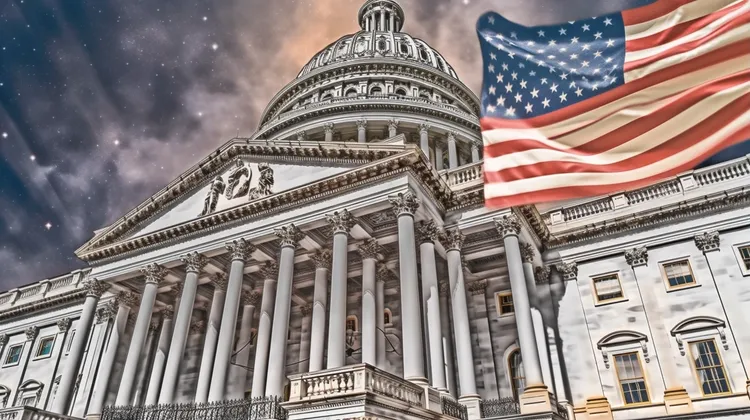
New Stablecoin Bill Draft Released by US House Committee
On December 3, 2020, the US House Committee on Financial Services released a new bill draft entitled the “Stablecoin Tethering and Bank Licensing Enforcement (STABLE) Act.” The bill was introduced by Representative Rashida Tlaib of Michigan, Representative Jesús Garcia of Illinois, and Representative Stephen Lynch of Massachusetts. The draft seeks to establish a clearer regulatory framework for stablecoins and their issuers.
The bill defines a stablecoin as “a digital asset that is designed to have a stable value relative to a unit of currency.” It applies to any issuer of stablecoins with over $100 million in outstanding balances and requires them to obtain a banking charter and regulatory approval before issuing stablecoins. The bill explicitly targets stablecoins that are not fully backed by a reserve of the underlying asset or have redeemable claims, as these stablecoins carry a higher risk for consumers.
The STABLE Act also requires stablecoin issuers to provide detailed information to regulators about their reserves, issuance, and redemption policies. Additionally, it prohibits stablecoin issuers from engaging in any lending or investment activities with their reserves and requires them to maintain a one-to-one reserve ratio for each outstanding stablecoin.
The draft bill also includes provisions for consumer protection. It requires stablecoin issuers to provide consumers with clear and concise information about the risks of investing in stablecoins, including the possibility of loss of value, insolvency risk, and the lack of deposit insurance. It also mandates regular third-party audits to ensure that stablecoin issuers are maintaining a one-to-one reserve ratio and have appropriate internal controls in place.
The STABLE Act has received mixed reactions from the cryptocurrency community. Some argue that the bill will provide much-needed regulatory clarity and consumer protection, while others believe that it will stifle innovation and hamper the growth of the stablecoin market.
Supporters of the bill argue that stablecoins represent a form of systemic risk to the financial system, as they could potentially be used as a vehicle for money laundering, terrorist financing, or other illicit activities. They also claim that stablecoins lack transparency and pose a threat to the stability of the traditional banking system.
Opponents of the bill contend that it will stifle innovation and hamper the growth of the stablecoin market. They argue that the regulatory burden imposed by the bill will discourage new entrants into the market and limit the ability of existing issuers to innovate and offer new products.
The STABLE Act is not the first attempt by US regulators to regulate stablecoins. In September 2019, the US Securities and Exchange Commission (SEC) settled with Telegram over its $1.7 billion ICO, which included the issuance of a stablecoin called Gram. The SEC found that the Gram token constituted a security and that Telegram had not complied with federal securities laws. The settlement resulted in the cancellation of the Gram offering and the return of $1.2 billion to investors.
In conclusion, the STABLE Act represents a significant development in the regulation of stablecoins in the US. While the bill is still in draft form and subject to revision, it is clear that lawmakers are taking an increasingly active role in regulating the cryptocurrency industry. The bill seeks to provide greater transparency and consumer protection for stablecoin investors while also addressing concerns around systemic risk and the potential for illicit activities. Whether the bill ultimately becomes law remains to be seen, but it is clear that the regulatory landscape for stablecoins is rapidly evolving.
13 thoughts on “New Stablecoin Bill Draft Released by US House Committee”
Leave a Reply
You must be logged in to post a comment.
This bill is just another example of government overreach. We don’t need more regulations!
The STABLE Act will kill the growth of the stablecoin market. This is a step backward for the cryptocurrency industry.
It’s ridiculous that stablecoin issuers will have to jump through hoops and obtain a banking charter just to issue stablecoins.
This bill is an attack on financial innovation and a threat to the future of cryptocurrency. We need less regulation, not more!
Maintaining a one-to-one reserve ratio for each stablecoin is a necessary safeguard to protect investors. It’s good to see this requirement in the bill. 👍💰
Regulating stablecoins will prevent potential money laundering, terrorist financing, and other illicit activities. This is a crucial step towards ensuring the stability of the financial system.
These regulations will only drive stablecoin issuers out of the US and hinder the country’s ability to compete in the global market.
The cryptocurrency community’s mixed reactions show that there is a need to strike a balance between regulation and innovation to foster a healthy stablecoin market.
It’s essential to strike a balance between regulation and innovation. The bill needs to consider fostering growth and encouraging new entrants into the stablecoin market. 💡🌈
It’s exciting to see how the regulation of stablecoins will shape the future of the cryptocurrency industry. It’s a rapidly evolving landscape that demands careful attention and consideration.
It’s disappointing to see lawmakers trying to stifle the growth of the stablecoin market. This bill is a step backward for the industry.
It’s frustrating to see lawmakers trying to control every aspect of the financial industry. Let stablecoins thrive without unnecessary regulations!
This bill will provide much-needed regulatory clarity, which is essential for the stability and growth of the stablecoin market. It’s a positive step forward. 📈✨